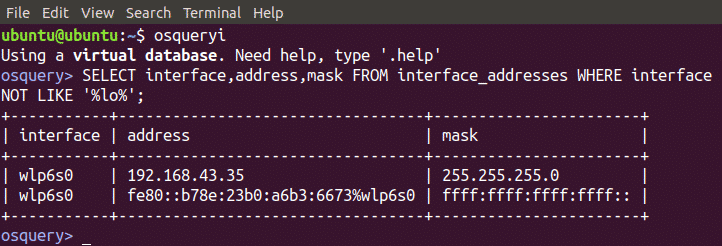



#OSQUERY DAEMON AND SHELL FACEBOOK FREE#
I will cover this in separate topic.The NHS is the United Kingdom's National Health Service, established in 1948 to provide free healthcare at point of service to all 64.6 million UK residents. On Container Linux osquery can be run inside toolbox which uses systemd-nspawn. In case of CoreOS Container Linux there is no easy way to run any service on the host/virtual machine. In real deployments it should be running on the host or virtual machine. Docker containers will end up sharing the same UUID.Īs I mentioned above osquery in docker only makes sense for playing with osquery or testing it. Host_identifier with uuid value is not appropriate if you are planning on launching multiple osquery docker instances or if you have osquery running on the host also. If hostname value is used for host identifier, you might want to start docker with hostname option: $ docker run -it -hostname -v /some/path:/etc/osquery -v/var/run/docker.sock:/var/run/docker.sock uptycs/osquery:2.7.0 –host_identifier flag should be appropriately configured. If logging is configured, osquery daemon needs to identify itself to the log endpoint. If you expose the document UNIX domain socket from host to the container osquery can query/gather information about docker images, containers, volumes, networks, labels etc $ docker run -it -v /some/path:/etc/osquery -v/var/run/docker.sock:/var/run/docker.sock uptycs/osquery:2.7.0 When osquery is running inside container, it cannot talk to the docker daemon running on the host machine. Osquery can also gather information about docker . Refer to osquery configuration documentation on what can be specified in conf file.Īssuming osquery.flags and nf are created on host machine in directory /some/path, osquery daemon can be launched as: $ docker run -it -v /some/path:/etc/osquery uptycs/osquery:2.7.0 Optionally configuration file can also be provided to the container. osquery have extensive number of command line flags. This is because the Dockerfile is configured to run the osquery daemon by default with the following arguments: osqueryd -flagfile /etc/osquery/osquery.flags -config_path /etc/osquery/nfįlags file and the config file are meant to be provided from the host. W0919 19:46:14.058230 7 init.cpp:649] Error reading config: config file does not exist: /etc/osquery/nf If you omit the command part it will launch the osquery daemon with a warning: $ docker run -it uptycs/osquery:2.7.0 In this case it will be one process: /usr/bin/osqueryi In the case of processes which are retrieved from /proc osquery will return the processes running inside the container. When running inside the container osquery will only return information available to it from within the container. You can run sample queries like: osquery> SELECT * FROM processes It will present a SQL prompt: $ docker run -it uptycs/osquery:2.7.0 osqueri Interactive shell can be launched as follows. Interactive shell osqueryi and osqueryd daemon. But if you are just playing with osquery and want to test some functionality docker images are ideal. Ideally running osquery in docker container doesn’t make sense unless you are using CoreOS Container Linux. We published images for various versions of Ubuntu and CentOS. Recently we ( Uptycs) started publishing docker images with latest osquery version.
#OSQUERY DAEMON AND SHELL FACEBOOK WINDOWS#
Windows functionality is maturing, thanks to open source community contributions and Facebook’s efforts. It has first class support for various flavors of Linux and macOS. It is being deployed to production servers as well as employee desktop/laptops. Numerous enterprises big and small from all verticals are using it, or planning on using it. It is extremely powerful tool that can be used for various purposes: If you are into security you might have heard about osquery.


 0 kommentar(er)
0 kommentar(er)
